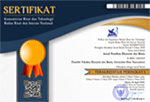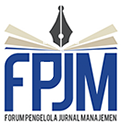Utilization of the Subak Jatiluwih Landscape as a Tourism Object: Tourist Perceptions and the Impact on Village Income
DOI:
https://doi.org/10.33633/jpeb.v8i1.7917Abstract
The growing development of the tourism sector impacts increasing land conversion, which results in a reduction in productive agricultural land and the threat of subak as an agricultural institution based on local wisdom in Bali. The development of the tourism sector has eroded the existence of subak due to the high economic value of converting agricultural land to non-agricultural functions. If this condition continues, the existence of subak as a form of local wisdom in the agricultural sector in Bali will become extinct. Moreover, the subak cultural landscape in Bali has been recognized by UNESCO as a World Cultural Heritage. The heritage includes four sites (areas) which all form one unit.This study aims to analyze the use of the Jatiluwih subak landscape as a tourist object by focusing on the problem of tourists’ perceptions of the subak Jatiluwih landscape and the impact of these tourism activities on village income. The research was conducted on the Subak Jatiluwih Landscape as a WBD icon. The approach used is a quantitative approach using primary and secondary data. The sample in this study was taken by interview method and documentation study, which was then analyzed descriptively. The analysis results show an increase in the number of tourist visits every year where tourists think that an interesting tourist object is a place that has uniqueness. Tourism activities also positively impacted the village economy, where the local traditional village managed and fairly shared income from entrance tickets to tourist objects.References
Capo, J., Font, A. R., & Nadal, J. R. (2007). Dutch disease in tourism economies: Evidence from the Balearics and the Canary Islands. Journal of sustainable Tourism, 15(6), 615-627.
Creswell, J. (2009). Research design: Qualitative, quantitative, and mixed methods approaches. Los Angeles: Sage.
Disparda (2022). Data Statistik Bali 2023. Diakses pada : disparda.baliprov.go.id
Hassan, S. (2000). Determinants of market competitiveness in an environmentally sustainable tourism industry. Journal of travel research, Vo. 38 No. 3, 239-245.
Ihalanayake, R. (2013). Tourism taxes and negative externalities in tourism in Australia: a CGE approach. Corporate Ownership & Control, 10(4), 200-214.
Jimura, T. (2011). The impact of world heritage site designation on local communities–A case study of Ogimachi, Shirakawa-mura, Japan. Tourism Management, 32(2), 288-296.
Ostrom, E. (2006). The value-added of laboratory experiments for the study of institutions and common-pool resource. Journal of Economic Behavior & Organization, Vol. 61 (2006), 149–163.
Prastyadewi, M. I., Susilowati, I., & Iskandar, D. D. (2020). Preserving the existence of subak in bali: The role of social, cultural, and economic agencies. Preserving the existence of Subak in Bali: the role of social, cultural, and economic agencies. Economia agro-alimentare : XXII, 3, 1-20.
Sgroi, F. (2022). Evaluating of the sustainability of complex rural ecosystems during the transition from agricultural villages to tourist destinations and modern agri-food systems. ournal of Agriculture and Food Research, 9, 100330.
Swain, R. B. (2018). A critical analysis of the sustainable development goals. Handbook of sustainability science and research, 341-355.
Tamarantika, F. d. (April 2017). Inkorporasi Kearifan Lokal dalam Pengembangan Kawasan Wisata di Lingkungan Pantai. Jurnal Sosioteknologi, Vol. 16, nO. 1 .
Teo, C. B., Khan, N. R., & Abd Rahim, F. H. (2014). Understanding cultural heritage visitor behavior: the case of Melaka as world heritage city. Procedia-Social and Behavioral Sciences, 130, hal. 1-10.
Tisdell, C. A. (2005). Economics of environmental conservation (Vol. 1). Edward Elgar Publishing.
UNESCO, 2017. Culture Lanscape of Bali Province : The Subak System as a Manifestation of Tri Hita Karana Philosophy. (diakses pada : http://whc.unesco.org).
Wells, V. K., Smith, D. G., Taheri, B., Manika, D., & McCowlen, C. (. (2016). An exploration of CSR development in heritage tourism. . Annals of Tourism Research, 58, 1-17.
Wuepper, D. &. (2016). Explaining the performance of contract farming in Ghana: The role of self-efficacy and social capital. Food Policy, 62, 11-27.
Downloads
Published
How to Cite
Issue
Section
License
The copyright of the received article shall be assigned to the journal as the publisher of the journal. The intended copyright includes the right to publish the article in various forms (including reprints). The journal maintains the publishing rights to the published articles.
This work is licensed under a Creative Commons Attribution 4.0 International License.


.png)











